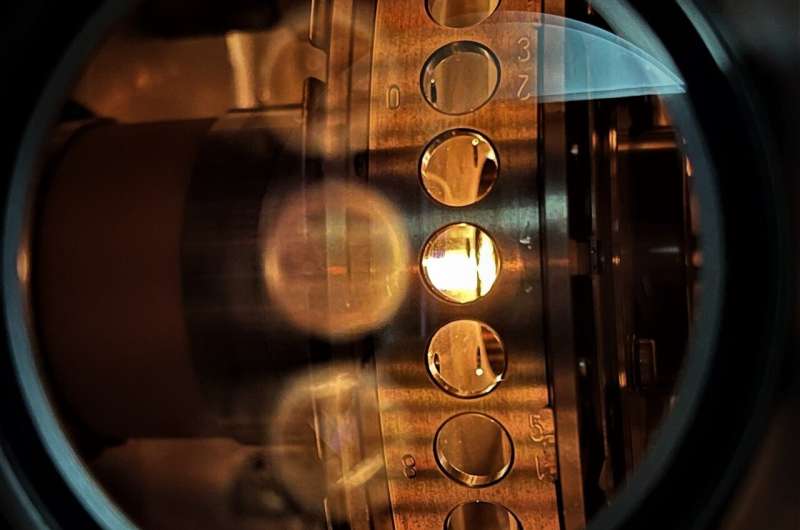Researchers at the Indian Institute of Science (IISc) have identified a way to estimate ancient seawater temperature by probing tiny bones in the ears of fish.
Oceans cover three quarters of the Earth’s surface and host many remarkable life forms. Earth scientists have been attempting to reconstruct the seawater temperature over time, but it is not easy to do so. “When you go back in time, you don’t have any fossilized seawater,” explains Ramananda Chakrabarti, Associate Professor at the Centre for Earth Sciences (CEaS), IISc, and corresponding author of the study published in Chemical Geology. Therefore, he and his Ph.D. student, Surajit Mondal, in collaboration with Prosenjit Ghosh, Professor at CEaS, turned to otoliths—tiny bones found in the inner ear of fish.
Like corals, otoliths are made of calcium carbonate and grow throughout a fish’s lifetime by accumulating minerals from seawater. Similar to tree rings, these otoliths also hold clues to the fish’s age, migration patterns, and the type of water that the fish lived in. For several years, Chakrabarti and his team have been tracking calcium carbonate deposits found in tiny animals like corals or foraminifera. In the current study, they chose otoliths, as scientists have discovered fossilized otolith samples dating as far back as the Jurassic period (172 million years ago).

Images of salts of elements being ionized for isotopic measurements in a Thermal Ionization Mass Spectrometer hosted in Ramananda Chakrabarti’s lab at the Centre for Earth Sciences, IISc. © Ramananda Chakrabarti
The researchers used six present-day otolith samples collected from different geographical locations along the east coast of North America. They analyzed the ratio of different calcium isotopes in these otoliths with a Thermal Ionization Mass Spectrometer (TIMS). By measuring the ratios of calcium isotopes in the sample, they were able to correlate it with the seawater temperatures from which the fish were collected. “We demonstrated that calcium isotopes are a powerful tracer of water temperature, and Surajit’s efforts make our lab the only lab in the country that can actually measure these isotopic variations,” says Chakrabarti. In addition to calcium isotopes, the team also analyzed the concentration of other elements like strontium, magnesium, and barium, and their ratios in the same sample, and collated the data together to tease out a more accurate value for seawater temperature within a range of plus or minus one degree Celsius when compared to the actual value.
Organisms that live in the ocean are extremely sensitive to temperatures. A two-degree temperature rise could lead to the extinction of several species. In addition, because the atmosphere and the ocean are “on talking terms,” says Chakrabarti, a lot of the carbon dioxide in the atmosphere eventually dissolves into the ocean, and this ability to dissolve carbon dioxide is also linked to seawater temperature—the lower the temperature, the more carbon dioxide is trapped. Just like a carbonated drink that loses its fizz as it warms up, the ocean loses its ability to hold carbon dioxide as it gets warmer.
Because of the close correlation they found between calcium isotope ratios and temperatures, the authors are confident that their approach can now be used on fossilized samples. Mapping early seawater temperatures is important to better understand Earth’s history, they say. “What happened back in time,” says Chakrabarti, “is key to our understanding of what will happen in the future.”
More information:
Surajit Mondal et al, A multi-proxy (δ44/40Ca, Sr/Ca, and Δ47) study of fish otoliths for determination of seawater temperature, Chemical Geology (2022). DOI: 10.1016/j.chemgeo.2022.120950
Provided by
Indian Institute of Science
Citation:
Using fish ear bones to estimate ancient seawater temperature (2022, August 10)



